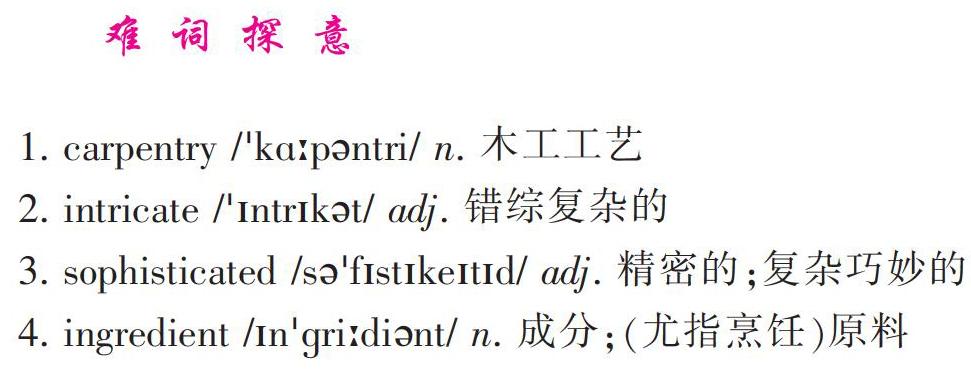Master carpenter becomes a YouTube sensation 阿木爷爷成“油管”网红

A 62-year-old Chinese man's traditional carpentry skills are delighting tens of millions of viewers on the Internet as he creates intricate toys for his toddler grandson out of nothing more than a single piece of wood, without glue, screws or nails.
Wang Dewen, known as Grandpa Amu on YouTube, has been dubbed a modern Lu Ban—the legendary woodworker credited in China with the invention of the saw and other tools, who today is regarded as the god of builders.
Wang's most popular works include a sophisticated folding stool, a model of the China pavilion from the 2010 Shanghai Expo, and an apple-shaped interlocking puzzle, in the style known to enthusiasts around the world as a Lu Ban lock. His young grandson's favourites are a walking Peppa Pig and a bubble blowing machine.
“Some of them I invented on my own, and some I learned online,” Wang said.
His extraordinary woodworking skills—using the same mortise-and-tenon(榫卯) joints
found in the Forbidden City—were developed from the age of nine as a means of supporting his family in the eastern province of Shandong. Wang's first piece was a cooking pot cover he made for his mother soon after his father died.
“We lived a hard life. There were four kids and my mother simply did not have enough food for us,” he said.
One day, the sweet potatoes Wang's mother was steaming did not cook all the way through because the lid on the pot was cracked.
“We didn't have money for a new one, so I asked a relative who was a carpenter how to make one, and he taught me. With my new cover, we had fully cooked sweet potatoes. I was so happy.”
Wang then started learning carpentry from the relative and doing odd jobs for him.
“In the beginning I didn't get paid. I was a kid. I just asked them to cover my meals in order to save food at home,” he said.
For the next five decades, Wang worked as a farmer and, in the slack season, as a carpenter, making furniture, as well as beams and doors for local building projects.
Two years ago, Wang left Shandong to live with his children in Mengshan County in the autonomous region of Guangxi Zhuang. It was a natural step to turn his bread-winning skills into an opportunity to make all kinds of toys for his young grandson, and it was not long before his son and daughter-in-law decided to video Wang's efforts.
“We came up with the idea of making the videos because we wanted to bring our rural culture to others and let people learn about these ancient Chinese techniques,” said Huang Chunmei, Wang's daughter-in-law.
His son, who used to work as an animated video producer, films and edits the clips, which have also included Wang's cooking on self-built stoves, using locally produced ingredients from the mountains of Guangxi, which have garnered millions of likes.
The videos were first shared on Chinese content platforms Toutiao and Xigua Video, where Gong Shi Dao, as the programme is known in China, is followed by 2.25 million people, and later on YouTube, where the master carpenter has so far attracted nearly 600,000 followers.
“I admire how much passion, patience and creativity you have with wood,” one YouTube user wrote. “It fascinates me to think of the thought and time that goes into it all, such love and talent you have for it and it makes me smile every time you give it all to your family.”
Wang's son and daughter-in-law now work full time on the videos and said they wanted to use their influence to help the local villagers to sell their farm produce.
To Wang, his Internet stardom is about nothing more than supporting his children.
“Part of my life here is taking care of my grandson, and another part is helping them shoot videos, which I think is a good idea,” he said.
“This is a nice place with clean water and air, and people are friendly.”
Reading check
What should we learn from Grandpa Amu according to the text?
____________________________________________

